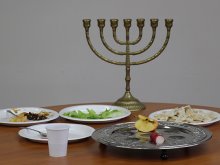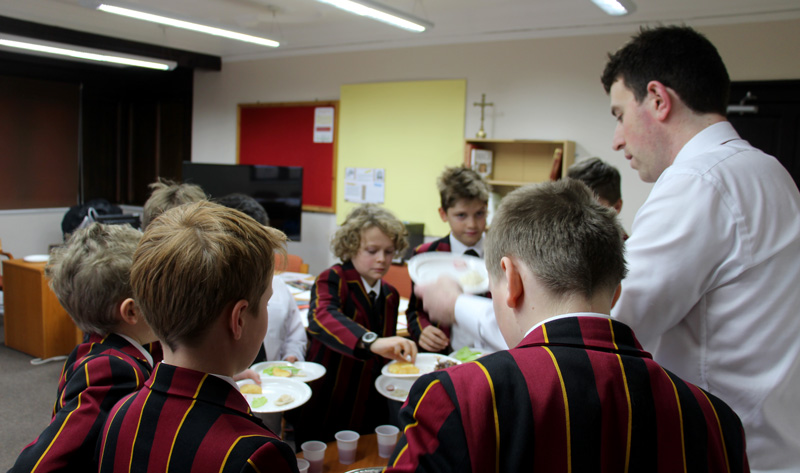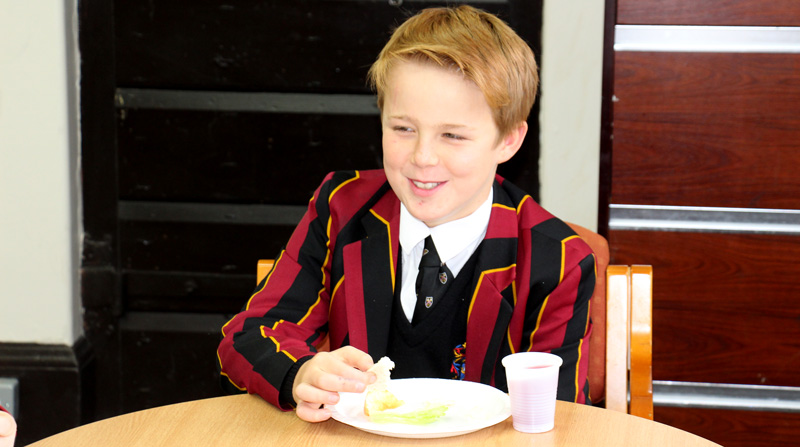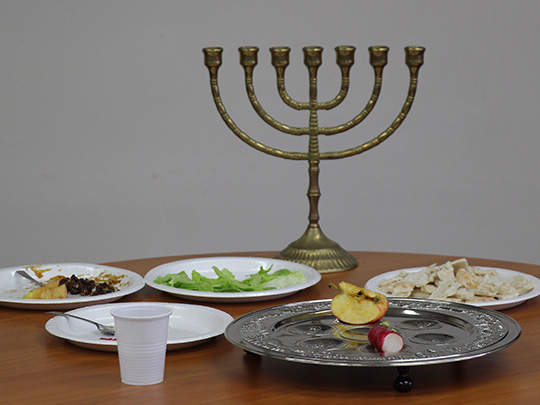
Pupils in Year 7 sampled
a new cultural experience last week as they prepared and enjoyed a Jewish
Passover meal. In their Philosophy lessons, Year 7 classes are currently
studying the Jewish festival, which takes place this year from April 3 to April
11. To reinforce their knowledge and understanding of the component parts,
pupils sat down together and shared the iconic Seder Meal.
The groups started the
topic by learning about the historical account in which the struggle of Moses
to free Hebrew slaves from the hands of the Egyptians led to God sending 10
plagues to Egypt. One of these plagues was the ‘death of the firstborn’. All
firstborn Egyptians died as the Holy Spirit passed through their houses,
whereas all Jewish houses were ‘passed over’. The bible reads: ‘This is a day you are to commemorate; for the generations to come you shall
celebrate it as a festival to the Lord — a lasting ordinance.'
From this, the Passover
festival was born. The Seder Meal is one which brings together ingredients that
hold significant reminders of this time in Jewish history. Philosophy teacher
Mr Jon Brownley and his class prepared each component part and learned why it
merited inclusion in the holy meal.
 The main part of the
meal is lamb, which was commanded by God to be sacrificed, with the blood used
to mark the doorframes of all Jewish doors so that the Holy Spirit would pass
over. Horseradish and bitter herbs are traditionally included to represent the
bitterness of slavery. Haroseth is a bittersweet ingredient to mark the
sweetness of the subsequent escape from Egyptian captivity. A roasted egg
symbolises new life and the hardness of the Jewish resolve.
The main part of the
meal is lamb, which was commanded by God to be sacrificed, with the blood used
to mark the doorframes of all Jewish doors so that the Holy Spirit would pass
over. Horseradish and bitter herbs are traditionally included to represent the
bitterness of slavery. Haroseth is a bittersweet ingredient to mark the
sweetness of the subsequent escape from Egyptian captivity. A roasted egg
symbolises new life and the hardness of the Jewish resolve.
Pupils sampled each
element of the dish, which can often be plain in taste and appearance but each
carry great significance. Many of the pupils were tasting ingredients for the
very first time. This triggered mixed opinions, particularly the horseradish
which was sampled by only the bravest of pupils.
Mr Brownley explained the importance of the lesson: ‘Seeing and tasting the foods will help pupils to associate the religious reasons behind their inclusion in the Seder Meal. It is also an important part of embracing and understanding other cultures. After completing our work on Jewish Passover we will move on to study other religious festivals around the world.’






















